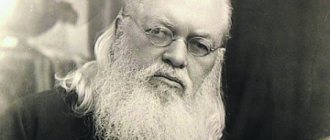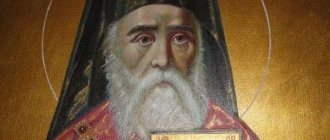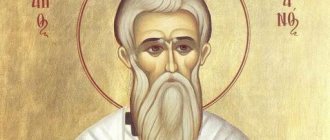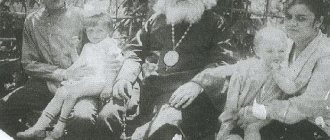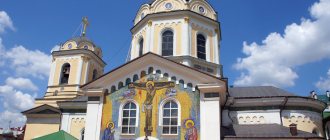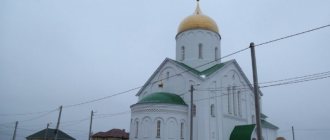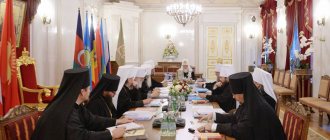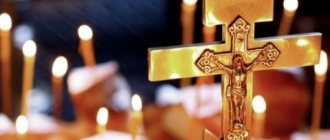On March 18, Orthodox Christians remember St. Luke of Crimea, Bishop of Barnaul
The Story of Saint Luke
Valentin Feliksovich Yasenetsky (Bishop Luka).
from free sources on the Internet
The life of this man fell in the turbulent and full of tragic events of the 20th century. Saint Luke was an outstanding scientist, surgeon and bishop of the Russian Orthodox Church. He shared with the people the hardships of all the wars that befell our Motherland in the first half of the 20th century, writes Delorus.com.
This path began with the Russian-Japanese War. Voino-Yasenetsky headed the department of surgery at the Kyiv Red Cross Hospital in the city of Chita. Here he met sister of mercy Anna Lanskaya, and they got married in the Chita Archangel Michael Church. Working in military hospitals, rural and urban hospitals and clinics, the future saint saved many people from death. Not a single person died under his surgical knife.
The work of a practicing surgeon was combined with enormous fundamental scientific work. He became the author of a number of classic scientific works on medicine. With his works, Saint Luke clearly refutes the atheistic myth about the incompatibility of science and religion, faith and knowledge.
He began his priestly path in 1921 after the death of his wife. Two years later, Valentin Feliksovich took monastic vows with the name Luke in honor of the holy apostle and evangelist. And in the same year he was elevated to the rank of bishop, after which ten days later he was arrested.
With short breaks, Saint Luke spent about ten years in prisons, camps and exile.
Valentin Feliksovich Yasenetsky (Bishop Luka).
from free sources on the Internet
Always and everywhere, in the most unbearable conditions, he remained faithful to his duty as a clergyman, doctor and scientist - to bring love and mercy to every suffering person. The prison ordeals ended during the Great Patriotic War, when St. Luke was in demand as an outstanding surgeon to work in military hospitals in the city of Krasnoyarsk.
The ascetic life of Saint Luke of Voino-Yasenetsky was highly noted by the state and the church. In December 1945, for helping the Motherland, Archbishop Luka was awarded the medal “For Valiant Labor in the Great Patriotic War.” At the beginning of 1946, a resolution of the Council of People's Commissars of the USSR with the wording “For the scientific development of new surgical methods for the treatment of purulent diseases and wounds, set out in the scientific works “Essays on Purulent Surgery” (finished in 1943) and “Late resections for infected gunshot wounds of joints” (published in 1944) Professor Voino-Yasenetsky was awarded the Stalin Prize of the first degree.
Valentin Feliksovich Yasenetsky (Bishop Luka).
from free sources on the Internet
The post-war years were primarily devoted to archpastoral service on the Crimean land. But they were also difficult in the atmosphere of official atheism. During the last three years of his life, Archbishop Luke also had to overcome a serious physical illness. He was completely blind. But even in this state, he continued to manage the Simferopol diocese and sometimes see patients, amazing local doctors with unmistakable diagnoses.
Valentin Feliksovich Yasenetsky (Bishop Luka).
from free sources on the Internet
On May 30, 1948, at a solemn service on the occasion of the 25th anniversary of his episcopal service, Archbishop Luke preached on the topic “Science and Religion,” where he referred to Copernicus, Pasteur, Pavlov and other believing scientists and added on his own: “Science without religion is heaven without sun. And science, clothed with light, is an inspired thought, piercing the darkness of this world with bright light.”
Saint Luke of Crimea died on June 11, 1961, on the Day of All Saints who shone in the Russian land.
Archbishop Luka became a victim of Stalinist repressions. Rehabilitated in April 2000. The Ukrainian Orthodox Church canonized Archbishop Luke on November 22, 1995. In August 2000, he was canonized by the Russian Orthodox Church in the host of new martyrs and confessors of Russia for church-wide veneration.
Barnaul trace
Father Valentin (Voino-Yasenetsky) was secretly promoted to the rank of Bishop of Barnaul (so-called chirontia) on May 31, 1923 in Turkestan, during a time of persecution by the authorities against leaders of the Orthodox Church. Here is what the current Bishop of Barnaul and Altai Sergius wrote about this:
Icon of St. Luke of Crimea.
from free sources on the Internet
At that time, Valentin Feliksovich lived in Tashkent, successfully worked in the medical field and at the same time served in the church as a priest, Fr. Valentin. This fact is confirmed by various data from secular medical historians. Unfortunately, the archives of our Barnaul diocese of that time do not record the arrival of Bishop Luke to the Barnaul see. This is probably due to a number of his family and professional circumstances. Formally, the ruling bishop in our diocese at that time (1923) was Metropolitan Macarius (Nevsky). But Metropolitan Macarius ruled the Altai flock from the Nikolo-Ugreshsky Monastery near Moscow, where he lived until 1925. This data is available in our diocesan archives.
Considering that after the October Revolution of 1917, the activities of the spiritual mission were stopped, most parishes, schools, and libraries ceased to exist, and in the period of the 1920-1930s, all monasteries, missionary camps, chapels were closed, archival documents were assigned to us by Voino -Yasenetsky are most likely in Tomsk. But we remember and honor the great saint and doctor. In particular, on June 25, 2013, a parish was created at the Regional Clinical Hospital in the name of the Holy Confessor Luke, Archbishop of Simferopol and Crimea. The construction of the hospital church in the name of St. Luke was also blessed. The founders of the parish, with the support of the chief physician Valery Elykomov, were doctors, senior nurses of the departments and employees of the information department of the leading clinic in Altai.
By the way, March 18 marks the 3rd anniversary of the episcopal consecration of Bishop Sergius.
Lukin or Onion Day: What you can and cannot do on May 5
On May 5, the Orthodox Church honors the memory of the Monk Theodore Sikeot, Bishop of Anastasioupol, who lived in the 6th century in Byzantium. According to legend, when his mother conceived him, she saw in a dream that a star descended into her womb. The wise old man explained to her that God’s grace had descended on her child and that he was destined to serve God. The whole life of the future saint was filled with amazing and sometimes magical events. Working hard, Theodore ascended in the religious hierarchy to the rank of bishop, but his soul sought solitude. Therefore, he retired to Jerusalem, where he spent his last years reflecting on his faith in God and reflecting on his own destiny.
In addition, May 5 is the day of veneration of the holy apostles Nathanael, Luke and Clement. And in the folk calendar this date is marked as Luka Day or Onion Day. It was customary to sow onions on Luka. By the beginning of May, peasants usually had little left of their winter supplies, so the saying remained in the people's memory: “There is neither bread nor flour in Luki.”
What to do on May 5
People believed that on this day you must eat at least a little onion. Whoever does not do this will get sick for a long time.
There was also a belief that pregnant witches danced in circles on Luka at dawn. It was believed that if a woman wanted to get rid of infertility, she needed to quietly sneak up on evil spirits, quietly take off her clothes and join the Sabbath.
What not to do on May 5
It was strictly forbidden to bake pancakes on Luka, so that the smell would not inadvertently attract evil spirits - if this happened, there would be quarrels and scandals in the family for a whole year.
You cannot be alone on this day, and especially not go into the forest alone - they said that evil forces will definitely confuse you and lead you along.
Folk sages do not recommend throwing things away - what is lost may not be found later, and even worse - dark forces will settle in it, which will provoke scandals in the house.
If there is a baby in the house, then on Luka you cannot take anything out of the house or give things to anyone - you can give away the child’s happiness with them.
Signs for May 5
If someone finds even a small amount of money on this day, they will soon receive a very large profit.
If it's warm outside, good weather will remain until the end of spring, and the year will be rich in harvest.
If there is frost on the night of Luka, there will be another 40 frosty nights until autumn.
Previously, 5-tv.ru talked about what you should absolutely not do in front of a mirror. At all times, a mirror has been considered a powerful energy conductor, which can bring a lot of trouble to a person if used incorrectly.
Signs
- If it freezes on Luka at night, then another forty morning frosts will fall on the grain fields.
- If the bird cherry blossoms early, then the summer will be warm. However, it should soon get colder, and “bird cherry cold” will set in.
- If the rowan tree has bloomed, the heat will be persistent.
- The cuckoo crowed - the frost will stop.
- If it’s a clear morning on Luke’s day, then it’s time to sow; if it’s foggy, you need to wait. At noon it will clear up - the sowing will be average, by the evening - late.
- The early moon promises early frosts, and you need to sow onions early in order to harvest the crop on time. If the moon is detrimental, it is better not to rush into sowing.
- It is dangerous for those born on May 5 to walk alone in the forest. They should wear sapphire.
Prepared based on information from open sources
Folk signs for Luke Day on February 20
On February 20, special attention was paid to the weather. Thunder could often be heard on Luka.
If this natural phenomenon occurs, there will be very bad haymaking this year. The grass will quickly disappear due to heavy rains or hot summers.
If poultry sits on their food early, then a sharp cold snap can be expected.
If dogs and cats are spinning on the ground, then heavy snowfalls are expected.
If animals consume little food, then we can expect strong warming.
If the clouds are moving heavily, you can expect warm weather.
If the sun is very red, then there will be strong winds. If the weather is warm and clear, it will remain like this all summer.
If it’s cold or raining, then you should expect dampness and cold. People born on February 20 are open and sincere. They always go towards their cherished dream. To have a lot of happiness in their life, it is worth giving a talisman made of alexandrite, amethyst.
History of the holiday Luke Day, February 20
If you believe history, then the Monk Luke was born many years ago. The parents were not from a rich family. It was difficult for them to raise a child due to frequent problems with money. Therefore, from early childhood, Luka tried to earn a few zlotys to help his parents in such a difficult time for them, he settled down to lose weight.
Children were given much more money for their efforts than adults. When he grew up, he began to study the Bible and often prayed to the Lord God and Jesus Christ. As soon as his father died, Luke went to a monastery. He accepted the Christian faith and often helped people. After some time, he cuts his hair and receives a monk. But the mother greatly missed her own son and asked to return her own child. God decided to return Luke to his father's house. Thanks to the blessing of God, the Almighty gives a man the gift of healing for obedience and faith. He could cure various diseases and directed people on the righteous path. St. Luke is a monastery, many people came to him so that he would heal illnesses. He died of his own death at an old age.
The Orthodox Church celebrates October 31, the Day of Remembrance of St. Apostle Luke
The Bible says nothing about the origin of the Apostle Luke - according to legend, the Savior's disciple was from an enlightened Greek family - perhaps the only author of the New Testament of non-Jewish origin.
Apostle named "Light"
The future evangelist, according to legend, was born in the Syrian city of Antioch (now the city of Antakya in Turkey). The parents named the boy Luca, which means “light” in Latin. From a young age, Luke devoted himself to science - he learned the art of healing, studied Jewish law and, having an excellent command of the Greek and Egyptian languages, became acquainted with Greek philosophy. Luke, having heard about the Savior, arrived in Palestine and became one of his followers. Among the 70 disciples-apostles, he was sent to the first sermon during the earthly life of Jesus.
Luke, one of the few faithful followers, was present at the crucifixion of Christ. For his devotion, he was one of the first to be honored with seeing the risen Savior - Jesus appeared to him and the Apostle Cleopas on the way to the village of Emmaus, not far from Jerusalem. Having taken part in the second missionary journey of the supreme apostle Paul, Luke became his doctor, student and friend. The Apostle Paul blessed the evangelist to establish the church in Macedonia. Saint Luke, having left Rome after the martyrdom of the chief apostles Peter and Paul, traveled with sermons throughout Greece, Macedonia, Italy, Libya and Egypt. Luke, with his tirelessness and firmness in faith, gained fame as “the second Apostle Paul.” In Thebes (Upper Egypt), helping to establish churches, the evangelist performed miracles, healed, and also converted many to Christianity.
© Sputnik / Vitaly Denisov.
Icon of St. Apostle Luke
The evangelist died as a martyr at the age of 84-85 - he was crucified in Thebes on an olive tree. According to another version, this happened in Achaia (a coastal region in northern Greece). The body of the evangelist was buried in Thebes - the relics of the Saint, which brought many healings, were there until the second half of the 4th century. Then the relics of the apostle were transferred to Constantinople - the capital of the Eastern Empire. The relics of the Apostle Luke are currently kept in Padua in the Basilica of the Holy Martyr Justina, and the venerable head is on Holy Mount Athos, in the Russian Monastery of St. Panteleimon.
Chronicler of Christ
The Gospel of Luke, which tells in detail about the life and preaching of the Savior, the third book of the New Testament. The third of the four canonical gospels, Saint Luke wrote under the direction of the Apostle Paul in Rome in 62-63 AD.
© Sputnik / Anton Denisov
Orthodox Christians celebrate October 30 as the day of the icon of the Mother of God “Deliverer of Troubles”
The Gospel of Luke in its theological content is primarily distinguished by its teaching about the universality of salvation accomplished by the Lord, as well as the universal significance of the gospel preaching. The book “The Acts of the Holy Apostles,” which tells about the life, works, miracles, sermons of Christ’s disciples and how the first Christian churches were organized, also belongs to the pen of the evangelist. According to church tradition, it was the Apostle Luke who first painted the image of the Most Holy Theotokos holding the Infant of God in her arms, and then two other icons of the Most Holy Theotokos during the days of Her earthly life. The Mother of God, seeing the icons, said: “The grace of Him who was born of Me and My mercy be with these icons.” Also, the Apostle Luke wrote on the boards images of the supreme apostles Peter and Paul. Therefore, the evangelist is considered the first icon painter in the world and the patron saint of painters.
What are they asking the apostle to do?
The Apostle Luke, who is revered as the patron saint of doctors and healers, is offered prayers for healing from various ailments, especially eye diseases. They pray to the Saint for help in spiritual life.
Prayers are offered to the evangelist before reading spiritual or theological books, as well as during icon painting.
V. Shiyanovsky
Apostle Luke is an illustration from the book “The Apostle” by the pioneer printer Ivan Fedorov (Moskvitin) (circa 1510–1583).
Prayer before the icon of St. Apostle Luke
Oh, Saint Luke, chosen by God and blessed by the Mother of God, preacher throughout the entire universe of the Gospel of Christ, martyr and apostle, helper to all who prayerfully call on you, help us, the indecent servant of the Lord, as we, due to our many sins, are found in darkness and the shadow of death, farther from God sucks. Through this shame, the imams who are not the boldness of the Lord to pray for forgiveness, we call on you, the great lamp of God, as one who abides in His eternal light, pray to the Lord for us, that he may have mercy on us. Pray to the Lord, Saint Luke, that the fear of the Lord will renew in us, it attracts love and drives away sin. As we have become accustomed to sinning every day and hour, and in our sleep, as if we do not know the words of the Lord: watch, for you do not know the hour when I want to come, He can call us at any hour from this temporal life to the eternal. Awaken in us, Saint Luke, fear and wisdom, about which the holy king and psalmist David spoke. May we receive tears of repentance through your prayers, in which all our souls will be cleansed from sin. Because we, in spiritual blindness and debility of existence, cannot cry over our dead, that is, to ourselves, but we need to shed many tears, streams of tears for the many sins we have committed. Help us, foolish ones, so that we may understand the Scripture, which you yourself copied, as if with true reason we will understand the true words, so that we may flee from sin as from fire, and let us exert all our strength, may God bring us closer. Let us understand that sin is death, but God is life. Help us, Saint Luke, so that when we understand, we will be cleansed of sin and pass from death to life. May God be all in all to us. And now and forever may we remain near Him. So that when we traveled to Emmaus, like you and Cleopas, our hearts and souls would be trembling at His presence. From here, may heavenly peace descend upon us, leading us to the Kingdom of Heaven and creating joy for us, so that we may drive away the arrows of the evil one, which are shot at us at every hour. With the same, we will receive the love of God, may he lead us to the eternal Fatherland, where all the powers of heaven, all the saints, the Mother of God are before them, even the good face in the icon you painted, you are immortalized. May the eyes of our hearts continually look at that beauty and enjoy it, may the Kingdom of Heaven reign in us, in which we hope that through your prayers, Saint Luke, will dwell when the Lord calls us, and there we will forever glorify God in the Holy Trinity: the Beginningless Father, the Only Begotten Son and the Most Holy Spirit, to all endless ages. Amen.
